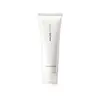Cetaphil Hydrating Foaming Cream Cleanser Versus AMOREPACIFIC Treatment Cleansing Foam Hydrating Cleanser
What's inside
What's inside
 Key Ingredients
Key Ingredients

 Benefits
Benefits

 Concerns
Concerns

 Ingredients Side-by-side
Ingredients Side-by-side

Water
Skin ConditioningSodium Cocoyl Isethionate
CleansingGlycerin
HumectantGlycol Distearate
EmollientSodium Cocoyl Glutamate
CleansingCocamidopropyl Betaine
CleansingSodium Lauroyl Sarcosinate
CleansingCetearyl Alcohol
EmollientPhenoxyethanol
PreservativeAcrylates/C10-30 Alkyl Acrylate Crosspolymer
Emulsion StabilisingArginine
MaskingPropylene Glycol
HumectantSodium Chloride
MaskingXanthan Gum
EmulsifyingEthylhexylglycerin
Skin ConditioningNiacinamide
SmoothingPanthenol
Skin ConditioningAloe Barbadensis Leaf Juice Powder
Skin ConditioningPantolactone
HumectantCitric Acid
BufferingWater, Sodium Cocoyl Isethionate, Glycerin, Glycol Distearate, Sodium Cocoyl Glutamate, Cocamidopropyl Betaine, Sodium Lauroyl Sarcosinate, Cetearyl Alcohol, Phenoxyethanol, Acrylates/C10-30 Alkyl Acrylate Crosspolymer, Arginine, Propylene Glycol, Sodium Chloride, Xanthan Gum, Ethylhexylglycerin, Niacinamide, Panthenol, Aloe Barbadensis Leaf Juice Powder, Pantolactone, Citric Acid
Water
Skin ConditioningGlycerin
HumectantStearic Acid
CleansingMyristic Acid
CleansingPotassium Hydroxide
BufferingLauric Acid
CleansingPEG-8
HumectantSodium Myristoyl Glutamate
CleansingGlyceryl Stearate
EmollientPEG-32
HumectantPEG/PPG-25/30 Copolymer
SolventSorbitol
HumectantPEG-200 Hydrogenated Glyceryl Palmate
CleansingCocamidopropyl Betaine
CleansingPhyllostachys Bambusoides Juice
Skin ConditioningPanax Ginseng Root Extract
EmollientMangifera Indica Seed Butter
Skin ConditioningOlea Europaea Fruit Oil
MaskingHelianthus Annuus Seed Oil
EmollientAlgae Extract
EmollientGlycyrrhiza Glabra Root Extract
BleachingCorallina Officinalis Extract
Skin ConditioningLactose
HumectantDisodium EDTA
Microcrystalline Cellulose
AbsorbentButylene Glycol
HumectantSucrose
HumectantAlcohol
AntimicrobialZea Mays Starch
AbsorbentOlive Oil PEG-8 Esters
EmollientCI 77007
Cosmetic ColorantXanthan Gum
EmulsifyingTocopheryl Acetate
AntioxidantTrehalose
HumectantTriclosan
PreservativePhosphatidylcholine
EmulsifyingPropylene Glycol
HumectantPEG-100 Stearate
PEG-14m
Emulsion StabilisingPEG-5 Rapeseed Sterol
CleansingPEG-7 Glyceryl Cocoate
EmulsifyingHydrogenated Lecithin
EmulsifyingSodium Benzoate
MaskingParfum
MaskingWater, Glycerin, Stearic Acid, Myristic Acid, Potassium Hydroxide, Lauric Acid, PEG-8, Sodium Myristoyl Glutamate, Glyceryl Stearate, PEG-32, PEG/PPG-25/30 Copolymer, Sorbitol, PEG-200 Hydrogenated Glyceryl Palmate, Cocamidopropyl Betaine, Phyllostachys Bambusoides Juice, Panax Ginseng Root Extract, Mangifera Indica Seed Butter, Olea Europaea Fruit Oil, Helianthus Annuus Seed Oil, Algae Extract, Glycyrrhiza Glabra Root Extract, Corallina Officinalis Extract, Lactose, Disodium EDTA, Microcrystalline Cellulose, Butylene Glycol, Sucrose, Alcohol, Zea Mays Starch, Olive Oil PEG-8 Esters, CI 77007, Xanthan Gum, Tocopheryl Acetate, Trehalose, Triclosan, Phosphatidylcholine, Propylene Glycol, PEG-100 Stearate, PEG-14m, PEG-5 Rapeseed Sterol, PEG-7 Glyceryl Cocoate, Hydrogenated Lecithin, Sodium Benzoate, Parfum
 Reviews
Reviews

Ingredients Explained
These ingredients are found in both products.
Ingredients higher up in an ingredient list are typically present in a larger amount.
Cocamidopropyl Betaine is a fatty acid created by mixing similar compounds in coconut oil and dimethylaminopropylamine, a compound with two amino groups.
This ingredient is a surfactant and cleanser. It helps gather the dirt, pollutants, and other impurities in your skin to be washed away. It also helps thicken a product and make the texture more creamy.
Being created from coconut oil means Cocamidopropyl Betaine is hydrating for the skin.
While Cocamidopropyl Betaine was believed to be an allergen, a study from 2012 disproved this. It found two compounds in unpure Cocamidopropyl Betaine to be the irritants: aminoamide and 3-dimethylaminopropylamine. High-grade and pure Cocamidopropyl Betaine did not induce allergic reactions during this study.
Learn more about Cocamidopropyl BetaineGlycerin is already naturally found in your skin. It helps moisturize and protect your skin.
A study from 2016 found glycerin to be more effective as a humectant than AHAs and hyaluronic acid.
As a humectant, it helps the skin stay hydrated by pulling moisture to your skin. The low molecular weight of glycerin allows it to pull moisture into the deeper layers of your skin.
Hydrated skin improves your skin barrier; Your skin barrier helps protect against irritants and bacteria.
Glycerin has also been found to have antimicrobial and antiviral properties. Due to these properties, glycerin is often used in wound and burn treatments.
In cosmetics, glycerin is usually derived from plants such as soybean or palm. However, it can also be sourced from animals, such as tallow or animal fat.
This ingredient is organic, colorless, odorless, and non-toxic.
Glycerin is the name for this ingredient in American English. British English uses Glycerol/Glycerine.
Learn more about GlycerinPropylene Glycol is an odorless, colorless liquid. As a humectant, it helps skin retain moisture. It also aids in delivering active ingredients.
Another role of this ingredient is preventing a product from melting or freezing. Propylene glycol also adds antimicrobrial properties to a product, elongating product lifespan.
This ingredient is considered an organic alcohol and commonly added into both cosmetics and foods.
Those with sensitive skin or conditions may develop a rash when using this ingredient.
Learn more about Propylene GlycolWater. It's the most common cosmetic ingredient of all. You'll usually see it at the top of ingredient lists, meaning that it makes up the largest part of the product.
So why is it so popular? Water most often acts as a solvent - this means that it helps dissolve other ingredients into the formulation.
You'll also recognize water as that liquid we all need to stay alive. If you see this, drink a glass of water. Stay hydrated!
Learn more about WaterXanthan gum is used as a stabilizer and thickener within cosmetic products. It helps give products a sticky, thick feeling - preventing them from being too runny.
On the technical side of things, xanthan gum is a polysaccharide - a combination consisting of multiple sugar molecules bonded together.
Xanthan gum is a pretty common and great ingredient. It is a natural, non-toxic, non-irritating ingredient that is also commonly used in food products.
Learn more about Xanthan Gum